Bringing India Alive
18 Feb 2016
Arabella Hotel, Kleinmond, South Africa
The irony of a Finance guy presenting to 150 top psychiatrists is not lost on me. I must confess that the closest I came to psychiatry was whatever popular work we all read of Freud… and that too, only because of the rather sensual title of his works: Redefinition of sexuality, Existence of libido, Seduction theory! For some time I even entertained the idea of becoming a psycho-analyst, till real doctors assured me that the couch is more hyped than real.
Our marketing team highlighted that some of you found the recent India trip an eye-opening experience. They also requested if I, being from Cipla’s parent Indian entity, could ‘bring India alive’ to this larger forum. So while your language and my language may not be best of friends – I talk Money, you talk Molecules; I talk Valuation, you talk Venlafaxine; I talk NPV, you talk Neurotransmitters – here’s still an attempt.
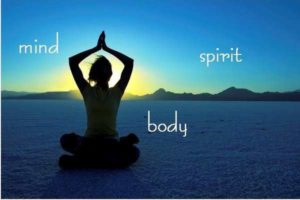
First, India, and Eastern culture, propagate a spiritual view of Life. They advocate the unity of body, soul and earth. Aham Brahmasmi, proclaim our Upanishads. “The real me inside is the same thing as the cosmos outside.” There is an innate tendency of the human spirit to find complete harmony with the natural order. Or Vasudhaiva Kutumbkam: The whole world is a family – in a spiritual sense, we are all connected to each other. Love thy neighbour, not just because it’s the moral thing to do, but also because you are your neighbour. The difference of I vs. You is just a materialistic deception.
Our ancient texts therefore argued that everything that happens in the mind has a physical impact elsewhere in the body: mental states (thoughts, feelings, perceptions and memories) directly influence physiology. Stress is mainly a symptom, with the root cause being an imbalance or a disordered state of mind. Hence, the need to create a balance: through yoga, breathing, right eating (Sattvic), meditation, and even reducing desire. A woman asked Buddha: “I want happiness”. Buddha’s reply was: First remove I because that shows ego; Then remove Want because desire is the root cause of all pain. And then, see only Happiness remains! Bhagwad Gita is often seen as an example of crisis intervention psychotherapy and none other than Gandhi turned to it whenever he felt lost.
Is this all hocus pocus, a pseudoscience? Depends on who you talk to. The high priests of particle physics: Schrodinger, Heisenberg & Neils Bohr, were captivated by the concept of Quantum Mysticism and explored the parallels between Eastern Mysticism and Atomic Physics. Carl Jung, as we all know, was heavily influenced by I Ching or Chinese Yin and Yang, as he developed his theory of Synchronicity. Deepak Chopra, MD and former professor at Harvard Medical School, practises integrative medicine, combining the medical model of conventional Western medicine with alternative therapies such as yoga, mindfulness meditation, and Ayurveda. And lest you write him off, he is worth more than R1 bn, with multiple celebrities in his patient list! On a more serious note, Dr. Jon Kabat Zinn, the famous Professor of Medicine at University of Massachusetts Medical School, gave multiple fMRI based evidences of mindfulness leading to lower stress and even started MBSR (Mindfulness Based Stress Reduction). Read his Full Catastrophe Living and be mesmerized!
You see, science may be sceptical about mysticism; incidentally, mystics also believe that science can only take you thus far. But we humans may need both.
Let’s move on.
The other glaring feature of India is its multiple paradoxes. Good and evil, pleasure and pain, opulence and poverty co-exist in this incredible mosaic.
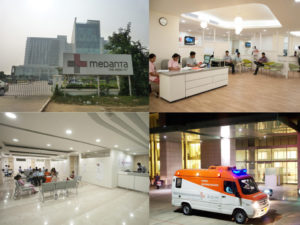

Let’s start with healthcare: some of the world’s best hospitals like Medanta Medicity in Delhi (1300 beds, Air Ambulance and Video consultation) co-exist with quacks and charlatans in the same 10 km radius. The first could save a comatose patient, while the latter could kill even in a minor infection. Our newspapers are replete with encouraging stories of the highest number of robotic kidney transplants and depressing stories of world’s highest antibiotic overuse.
The story is similar in Education. World class institutions like IITs and IIMs often place their students at a starting R2m salary. On the other hand, the bulk of 2m annual graduates remain unemployed: organized sector employment is at an abysmal 15% while various surveys suggest that only 20% of university graduates are actually employable. What the universities teach and what the corporate wants are just so different… and never the twain shall meet. Ironic because the world’s first university, Takshila, was founded in India 3000 years ago and boasted of 10,000+ students from all over the world.


In Real Estate, eye-popping bungalows (Ambani’s house worth US$2bn is rated the most expensive residence in the world) are just 100m away from US$10 a month slums. Stately Towers and Slums, Porsches and Potholes, Taj Mahal @ Agra and Trash at every road, Beauty Queens and malnourished kids… all co-exist in this fantastic medley. The Indian traffic is of course a Theory of Chaos on its own, but trust me there is a method in the madness: The per capita road fatality in India is actually lower than world average.
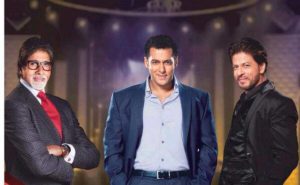
Then, of course, there is Bollywood and Cricket. Amitabh Bachhan and Shah Rukh Khan are household names and our songs and gyrating dance sequences are much loved – and parodied – all over. In cricket, SA’s Chris Morris has just been taken by Delhi Daredevils for a massive R15m!
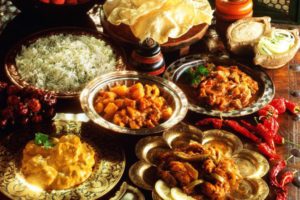
And then, my favourite: Indian food! Who doesn’t like Tandoori Chicken, Lamb vindaloo and Naan bread. Cape Town has even customized the cuisine, so much so that the butter chicken curry here almost tastes like a dessert to me! Where is all the Durban spice?

I could go on: The saree and the shervani, the big fat Indian wedding (my own ‘middle class’ wedding was attended by a 1000 guests), the world’s largest democracy with 1.3bn population, the world’s fastest growing major economy, the invention of zero and calculus, and also of Kama Sutra in India!
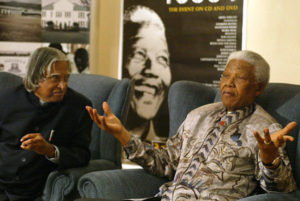
Finally, there is a lot in common between our two great nations. Our father of the nation, Mahatma Gandhi spent 21 years in South Africa. Nelson Mandela’s first trip abroad (after coming out of jail) was to India where he was conferred India’s highest honour, The Bharat Ratna. Mandela’s ‘An ideal for which I am prepared to die‘ and Nehru’s (our first PM) ‘Tryst with Destiny’ speeches feature in the world’s Top 15 speeches. You would also find a lot of resonance between our 2 constitutions: Democratic values, Social Justice, Fundamental Human Rights, Rainbow Nation or unity in diversity etc… Ironically, both our nations probably also suffer from the same challenges: Poverty, Disparity, Corruption, Unemployment. Overall a rather sobering reality check against the great founding principles.
Cipla itself was founded with very high ideals… None shall be denied. Affordable healthcare to all. Our founder headed Gandhi’s call to be self-reliant in medicines. You would recall that Cipla was responsible to bring down the price of HIV medicines in SA from US$12000 an year to now US$120 an year. Even now, Cipla South Africa remains the largest business for Cipla outside India, a whopping 13%, while SA would generally be 1-3% for most other MNCs.
I hope I have lived to your request of providing some glimpses of India. And showing how our destinies in India and South Africa are inter-twined. And, hopefully, how Cipla is trying to be a bridge…
With that, the time may just be right to invite you for dinner… A full course Indian buffet awaits you just outside the door!
– Nishant Saxena
Executive Director & CFAO
Cipla Medpro South Africa



 This information will never be shared with third party
This information will never be shared with third party
I am proud to read this Great article. The way you shown Indian culture, Indian Scientists knowledge, Food, etc., are excellent. Yes, it’s difficult to explain about India in 20 minutes.